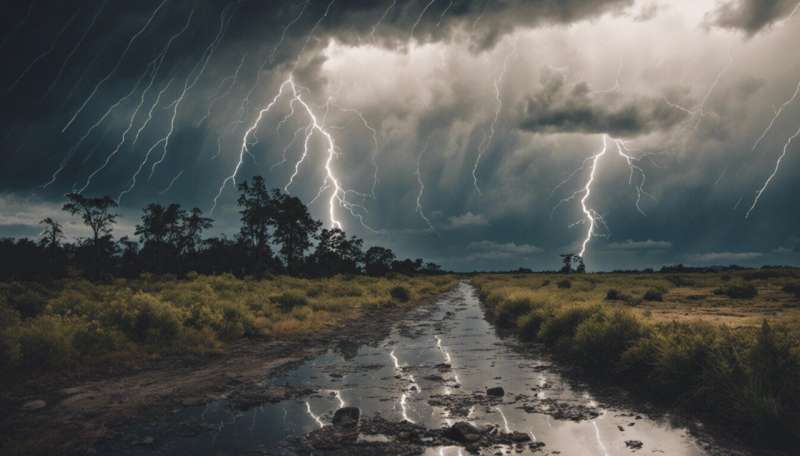State-of-the-art Earth explorer tracks storms before they hit, keeps up with increasing frequency of extreme events

Extreme weather phenomena are starting to show signs of a regular pattern: instead of taking place every 10 or 20 years, they are happening every 2 or 3 years. But technology can stay one step ahead, by predicting when these extreme weather events will occur. As in the case of the European Space Agency's (ESA) satellite, which was able to track Hurricane Sandy.
The largest Atlantic hurricane on record was captured by ESA's Soil Moisture and Ocean Salinity (SMOS) satellite. As its name suggests, the SMOS satellite is designed to measure how much moisture is held in soil and how much salt is held in the surface waters of the oceans. Understanding the water cycle is an essential component of the Earth system. It also has the ability to see through clouds, providing reliable estimates of the surface wind speeds under intense storms, whilst tracking and forecasting hurricane strength.
Unusually, Hurricane Sandy was a hybrid storm, tapping energy from the evaporation of seawater like a hurricane and from different air temperatures like a winter storm. These conditions generated a super storm that spanned an incredible 1,800 km, leaving complete devastation in its wake.
As it orbited above, the satellite intercepted parts of Hurricane Sandy at least eight times as the storm swept over Jamaica and Cuba around 25 October, until its landfall in New Jersey, United States, four days later. The data from these encounters have been used to estimate the speed of the wind over the ocean's surface.
Extreme weather has been a regular occurrence in 2012, with some of the warmest years ever recorded in the United States, record-high temperatures in central and eastern Europe, and an extremely wet summer in the United Kingdom. Scientists have been warning for years that as the planet heats up, we will have to deal with more severe, more changeable, more unpredictable weather.
An example illustrating this was last year's record-warm November in the United Kingdom, the second hottest on record. Researchers say that it was at least 60 times more likely to happen because of climate change than because of natural variations in the earth's weather systems. The retreat of sea ice in the Arctic was also at a record high this summer, with just half the ice present compared to when satellite measurements began in 1979.
The subject of our changing climate is one that Connie Hedegaard, the EU's Climate Action Commissioner, feels very strongly about. She says; 'It is simply incredible what big risks some people are prepared to take on behalf of future generations. Despite the facts and evidence in front of us, there are still many interests advocating doing nothing or continuing with business as usual. Or just forgetting the climate crisis until we have solved the economic crisis. I see intelligent climate action as a driver of new opportunities for jobs in Europe, for investments in energy efficiency technologies, for boosting innovation and competitiveness, for lowering energy bills. To me, tackling the climate crisis helps, not damages, our economic security and prosperity. Both crises are interlinked and must be tackled together.'
Provided by CORDIS


















